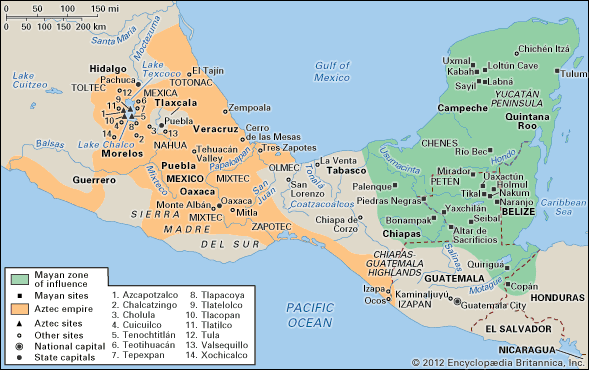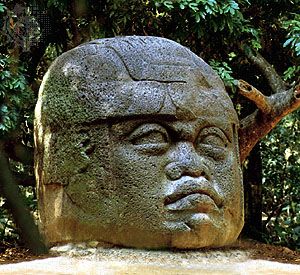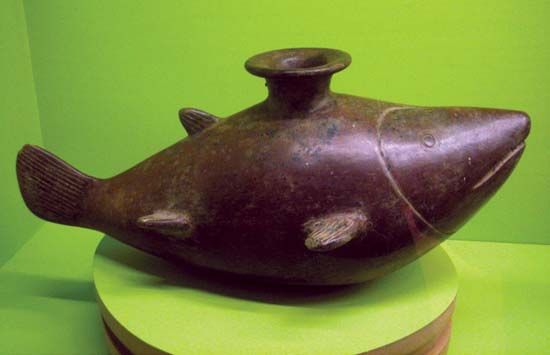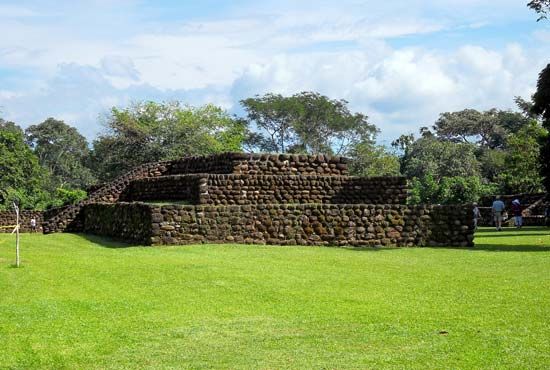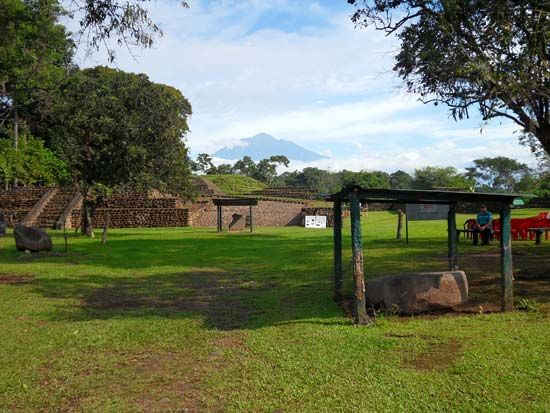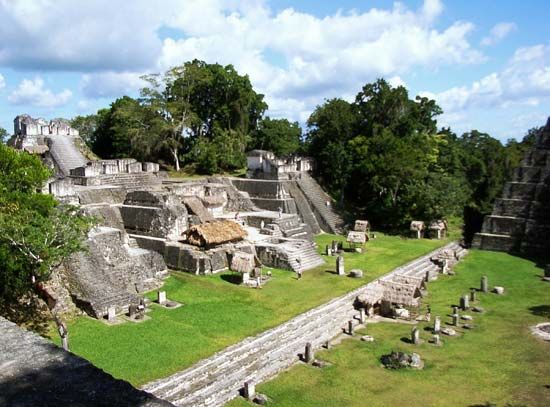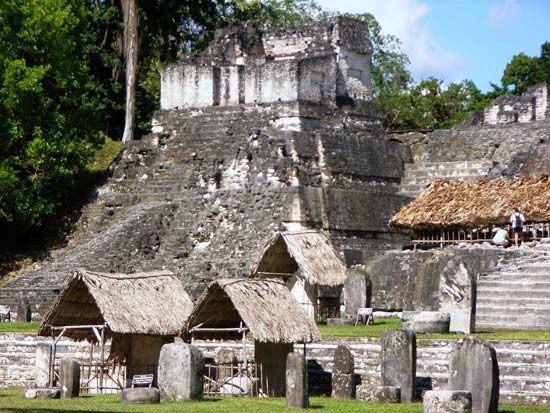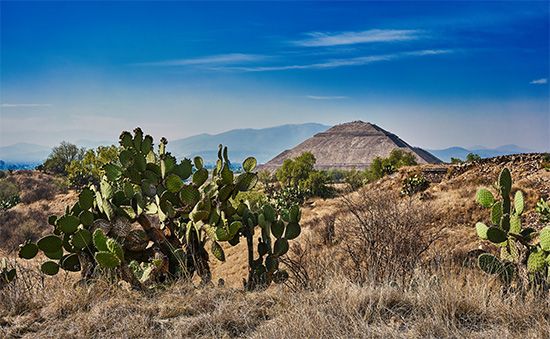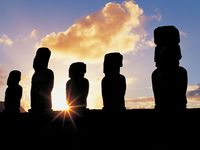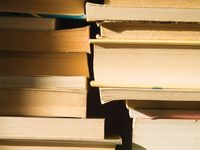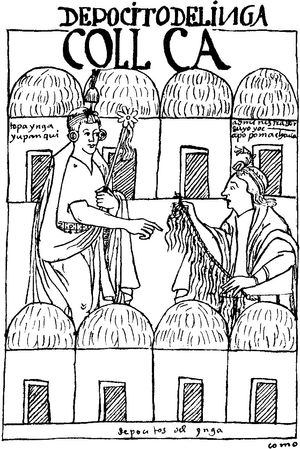The Chincha
The growth and expansion of Chimú were paralleled on the southern coast by Chincha, which was a similarly well-organized polity. Comparison between them has been difficult because of the very different evidence available. Whereas Chimú has become familiar through extensive archaeological research, data on the Chincha has come primarily from the study of historical sources.
In the first few years of Spanish rule, the Holy Roman emperor Charles V complained that he had not received any of the newly conquered lands as a personal fief. The conquistador Francisco Pizarro and his brother Gonzalo hurried to assign him three ethnic groups: (1) The Aymara kingdom of the Lupaqa, listed on the Inca quipu at 20,000 households, (2) the tropical island of Puná, in the Gulf of Guayaquil in modern Ecuador, with an unknown aboriginal population, and (3) the coastal Chincha polity, allegedly with 30,000 households. Unfortunately for the Chincha, their population vanished within the first three decades of the Spanish invasion; the royal affiliation and proximity to Lima did not help protect the Chincha.
Belonging to the crown, however, did promote account keeping and administrative reports to the Spanish court. The unusual feature about Chincha was its considerable orientation to the sea. Several thousand households were listed as high-seas fishers and sailors, and thousands more were engaged in long-distance trade with lands to the north. Because the waters off the Chilean and Peruvian coast were cold, there was a long-standing interest in the warm waters off the Ecuadorean coast, more than 1,000 miles away, where the Antarctic current was no longer present. The details of these exchanges are not known, but one feature was paramount in Andean eyes: throughout the central and southern Andes, wherever puna dwellers were the dominant population, there was a demand for the spiny oyster (Spondylus), the shells of which were believed to encourage rainmaking. The one Quechua literary text available lists the spiny oyster as the favourite food of the gods, although it was inedible for humans.
While there has been a long-standing archaeological interest in the shells of this mollusk, the extent and the organization of the shell traffic has not been verified archaeologically. One of the witnesses of the invasion, Pedro Pizarro (a cousin of Francisco), reported being told that the Chincha lord had 100,000 rafts on the “Southern Sea.” The number need not be accurate: even 1,000 oceangoing rafts, with keels and sails, would imply a major economic operation.
Chimú and Chincha have received considerable attention from non-Peruvian scholars; understanding of the contemporaries of these peoples in the highlands, however, has remained sketchy. The oral tradition reported by the early European observers claimed that before the expansion of Tawantinsuyu, the Inca state, there were many polities large and small, all ruled by traditional lords and frequently at war with one another. To what extent the notions of ecological complementarity or the vertical archipelago were attempts to bridge these conflicts or their consequences cannot be stated with any certainty.
The 17th-century Andean writer Felipe Guamán Poma de Ayala (Waman Puma) reported the oral tradition that he had learned from his forebears, who were minor ethnic lords in the Huánuco region. In the century before the Inca conquest people had lived in the “epoch of the soldiers.” During this period
they began to fight and there was much war and death…one lord against the other…bloodshed and taking of prisoners. And they also grabbed their wives and sons and took their fields and irrigation waters and pastures. And they were very cruel and stole each other’s property, cloth, gold, copper, even their millstones.…And so they went and settled on the heights where they built walls and houses inside…and wells to draw water.
Poma de Ayala’s description of Late Intermediate settlement patterns on mountaintops, at the very edge of and even beyond puna cultivation, has been confirmed by field research undertaken near Lake Titicaca by the American archaeologist John Hyslop. He found dozens of walled-in enclosures of 50 to 100 acres and larger. During the Late Horizon—which corresponds to the century of Inca rule—these populations were moved to the lakeshore, along the royal road.
The Inca
Forty years had elapsed since Columbus’s landfall when in 1532 fewer than 200 Spaniards brought down the Inca (Inka) state. Ever since then, historians have been pondering the reasons for this sudden collapse. The evidence seems to favour internal subversion. Don Francisco Cusichaq, lord of the Huanca in central Peru, opened the country to alien rule; he wanted to destroy his hereditary enemies, the Inca. The Andean pattern of many dispersed regional polities that frequently were at war with one another—a situation that the Inca had manipulated but had not eliminated—and the diverse archipelago-like string of the communities may also have facilitated the relatively effortless Spanish victory.
By 1532 Tawantinsuyu, the Inca state, had incorporated dozens of coastal and highland ethnic groups stretching from what is now the northern border of Ecuador to Mendoza in west-central Argentina and the Maule River in central Chile—a distance roughly equal to that between New York City and the Panama Canal. By conservative estimates the Inca ruled more than 12,000,000 people, who spoke at least 20 different languages. A century earlier, during the wars of the Late Intermediate, they had controlled little beyond the villages of their own Cuzco Valley. While forming their state they subordinated more than 100 independent ethnic groups; how much of this achievement corresponded to political experience gained during the Middle Horizon cannot be told. It is likely that the memory of that multiethnic expansion was alive in the ruling families of the major polities.
The origins and expansion of the Inca state
Inca origins and early history are largely shrouded in legends that may be more mythical than factual. Their later history, particularly from the reign of Pachacuti Inca Yupanqui (Pachakuti ’Inka Yupanki; see Table 2) onward, is largely based on fact, even though it presents what the Inca wanted people to know. Whether these historical traditions are true, in the sense that they accurately related what happened, is not so important as the fact that the Inca used them to justify their various imperial conquests.
| Inca rulers and royal corporations | ||
|---|---|---|
| Inca name | Spanish spelling | panaca (royal corporation) |
| Manqo Qhapaq | Manco Capac | Chima |
| Zinchi Roq'a | Sinchi Roca | Rawra |
| Lloq'e Yupanki | Lloque Yupanqui | 'Awayni |
| Mayta Qhapaq | Mayta Capac | 'Uska Mayta |
| Qhapaq Yupanki | Capac Yupanqui | 'Apu Mayta |
| 'Inka Roq'a 'Inka | Inca Roca | Wika-k'iraw |
| Yawar Waqaq | Yahuar Huacac | 'Awqaylli |
| Wiraqocha 'Inka | Viracocha Inca | Zukzu |
| 'Inka 'Urqon | Inca Urcon | none |
| Pachakuti 'Inka Yupanki (1438–71) | Pachacuti Inca Yupanqui | 'Iñaqa |
| Thupa 'Inka Yupanki (1471–93) | Topa Inca Yupanqui | Qhapaq |
| Wayna Qhapaq (1493–1525) | Huayna Capac | Tumipampa |
| Washkar 'Inka (1525–32) | Huascar | Washkar |
| 'Ataw Wallpa 'Inka (1532–33) | Atahuallpa | none |
| Thupa Wallpa (1533) | Topa Huallpa | none |
| Manqo 'Inka Yupanki (1533–45) | Manco Inca Yupanqui | none (?) |
The nature of the sources
The Inca kept detailed accounts of their dynastic history, knotted onto the quipu records kept by professional accountants. The major local ethnic lords also kept records. As mentioned above, Don Francisco Cusichaq kept records of Spanish exactions, which were offered to and accepted in evidence by Spanish administrators. Through the study of Cusichaq’s quipu, modern researchers have learned that there was both a quantitative and a historical dimension to Andean records. Cusichaq’s quipu refers to more than 20 separate events—all recorded in perfect historical sequence—but the way in which these events were recorded has not been fathomed. The quantitative record, which was easier to decipher, lists counts of men and women on the first two cords, followed by the number of domestic animals (llamas being separated from alpacas). Cloth, the most valuable commodity according to Andean reckoning, comes first among the goods listed, followed by food and household items. The quipu could incorporate strings for new, Spanish items. Thus, in Cusichaq’s records Spanish sandals are itemized separately from Andean footwear, and eggs and imported hens have their own strings.
The Cuzco bookkeeping records were used by the Spanish in the early days of their rule in order to divide the country and its population among the invaders. The accuracy of the information about distant places and peoples available to the Inca rulers astonished the Spanish observers. Some among them transcribed what they were told; these accounts became the source of the fragmentary information available to modern researchers. In 1549 and again in the 1570s systematic efforts were made by the Spanish to investigate the Andean past. Some of the interviewers were excellent ethnographers who noted discrepancies between separate oral traditions and contradictions from one set of claims to another. Just as in Mexico, where there were true ethnographers like Bernardino de Sahagún, so in the Andes a young soldier, Pedro de Cieza de León, was a remarkable interviewer, who constantly checked what he had been told by the members of one royal lineage against alternate versions.
Thus, the present knowledge of Inca society has been derived from a combination of archaeological studies and the written accounts sent to Spain by the early Spanish observers. Some of these accounts reached a wide public: within two years of the fall of the Inca, two quite different versions of what happened at Cajamarca (the place where Pizarro first met and kidnapped the Inca ruler Atahuallpa) were already in print in Europe. One of these was the official version of the Pizarro brothers, while the other criticized their actions. At a time when printing was still a rare skill and censorship was severe, such ample coverage of the invasion is notable.
The first serious study of the Andean peoples was written by Cieza de León, who had reached the Americas as a 14-year-old soldier and had settled in what today is Colombia. A decade or so later he drifted by horse to what is now Peru; he then rode for some 1,300 miles, traveling as far south as the mines at Potosí, in present-day Bolivia. Cieza de León was encouraged by the clergy, many of them partisans and correspondents of the Dominican missionary and historian Bartolomé de Las Casas, to interview both Spanish and Andean participants of the invasion and of the wars that some Andean factions had fought against one another.
The most widely read source during the colonial period was the work of Garcilaso de la Vega, also called El Inca—the son of an Inca royal woman and a Spanish nobleman (whose name the son adopted when he “returned” to his father’s estate in Spain). He lived in Spain nearly 60 years, leading the life of a gentleman, reading, translating love poetry, editing the memoirs of one of the early invaders of Florida, and, finally, writing a vast account of his mother’s ancestors, The Royal Commentaries of the Inca.
Guamán Poma de Ayala (Waman Puma) was one of the few Andean writers whose work is available. He wrote a 1,200-page “letter” to Philip III of Spain, consisting of two books combined into one. The first book was a “new chronicle,” describing Andean achievements and history; the second, much larger part advised the king on how to achieve a “good government.” The second included 400 pages of pen-and-ink drawings, which have remained a major contribution to the modern understanding of Andean society. The manuscript somehow reached the Danish Royal Library in Copenhagen, where it was discovered in 1908 and where it still resides.

